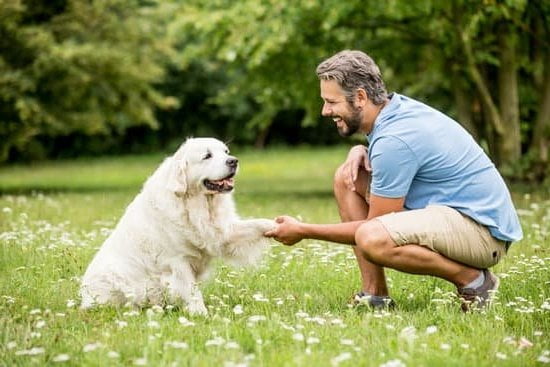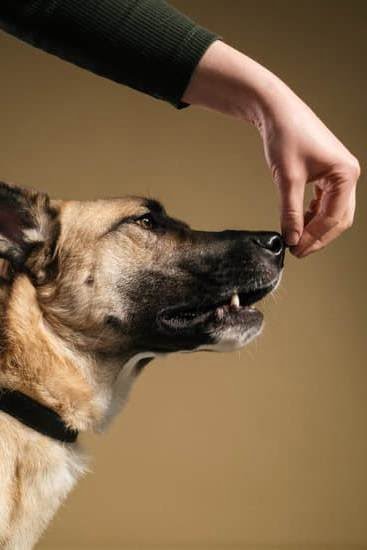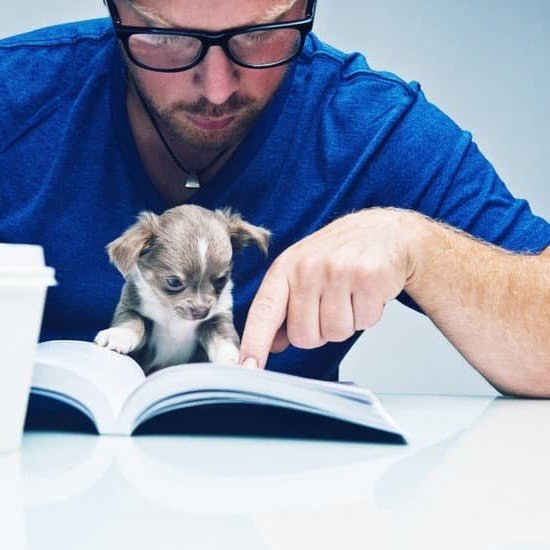When it comes to finding missing persons, there are few tools more indispensable than a well-trained K9 search and rescue dog. These remarkable canines possess extraordinary abilities that make them invaluable in locating individuals who may be lost or in distress. With their exceptional sense of smell, hearing, agility, and unwavering loyalty, these K9 heroes have become an indispensable asset to search and rescue teams worldwide.
The critical role of K9 search and rescue dogs cannot be overstated. Equipped with an unparalleled ability to pick up scents, navigate difficult terrain, and work tirelessly alongside their human partners, these highly trained animals have proven time and time again that they can locate missing individuals even in the most challenging circumstances.
Whether it’s searching for a lost hiker in a vast wilderness or tracking down a stranded victim during a natural disaster, these dogs play a vital role in emergency response efforts.
What sets K9 search and rescue dogs apart is their innate traits that make them ideal for these types of missions. Their superior sense of smell allows them to detect even the faintest scent trails left behind by humans.
With up to 300 million scent receptors compared to our meager 5 million, dogs are truly gifted when it comes to identifying specific human odors. Additionally, their acute hearing enables them to pick up on subtle sounds that might otherwise go unnoticed by humans, while their agility allows them to manoeuver through difficult terrains with ease.
In the following sections of this article, we will explore the historical background of K9 search and rescue training as well as delve into the various techniques used to train these incredible canines. We will also uncover the bond between handlers and their dogs as well as highlight real-life success stories that demonstrate the impact of K9 search and rescue teams.
Through this exploration, we hope to shed light on the immense contribution these dogs make in finding missing persons and recognize their heroic efforts.
Historical Background
K9 search and rescue training has a rich historical background that spans centuries. The origins of using dogs in search and rescue missions can be traced back to ancient times, where evidence suggests that the Greeks and Romans employed dogs for tracking purposes. However, it wasn’t until the late 18th century that the formal training of search and rescue dogs began.
During World War I, both the Allied and Central Powers recognized the potential of dogs in aiding their military operations. Dogs were trained to fulfill various roles, including search and rescue missions. These early efforts laid the foundation for modern K9 search and rescue training methods.
In the early 20th century, organizations dedicated to training search and rescue dogs started to emerge. One notable example is the Swiss Alpine Club, which established dog teams for mountain rescues in 1936. Their achievements paved the way for standardized training methodologies and equipment.
The advancements in K9 search and rescue training methods continued throughout the 20th century. In the 1970s, organizations like Search And Rescue Dogs of America (SARDA) introduced more systematic approaches to training, incorporating behavioral science principles into their programs.
Today, K9 search and rescue training has reached new heights with the aid of technology and scientific research. Handlers now have access to state-of-the-art equipment such as GPS trackers, collapsible cameras, drones, and even specially designed harnesses that allow dogs to rappel or be airlifted alongside their handlers.
The historical evolution of K9 search and rescue training showcases our ongoing commitment to enhance these incredible animals’ abilities continuously. With each passing year, new techniques are developed to improve their efficiency further. As we delve deeper into understanding canine behavior and physiology, there is no doubt that future generations of K9 search and rescue dogs will continue to astonish us with their prowess in finding missing persons.
| Century | Significant Developments |
|---|---|
| 18th Century | Informal use of dogs in search and rescue missions |
| 20th Century | – World War I: Dogs used for military search and rescue purposes
|
| 21st Century | – Integration of technology into K9 search and rescue training (e.g., GPS trackers, drones)
|
Basic Traits
Dogs have long been considered man’s best friend, and their exceptional qualities and abilities make them indispensable in search and rescue missions. The innate characteristics of dogs play a crucial role in their effectiveness as search and rescue animals. This section will delve into the specific traits that make dogs ideal for these missions, including their superior sense of smell, hearing, and agility.
Superior Sense of Smell
One of the most remarkable qualities possessed by dogs is their extraordinary sense of smell. It is estimated that a dog’s olfactory system is 10,000 to 100,000 times more sensitive than that of humans. This allows them to detect even the faintest human scent from a considerable distance.
Dogs are equipped with approximately 220 million scent receptors in their noses, compared to a meager 5 million in humans. Their ability to differentiate and track different scents makes them invaluable assets in locating missing persons.
Keen Hearing
Another trait that makes dogs well-suited for search and rescue missions is their acute hearing abilities. Dogs can hear frequencies ranging from 40 Hz to 60 kHz, while humans generally fall within the range of 20 Hz to 20 kHz. This heightened auditory perception enables dogs to pick up on faint sounds or distress signals that may be imperceptible or overlooked by humans. They can identify specific sound patterns associated with people in need and alert the handlers accordingly.
Agility
The physical agility of dogs also contributes significantly to their effectiveness as search and rescue animals. Their nimbleness allows them to traverse rugged terrains, climb obstacles, and navigate through tight spaces with ease. Whether it’s maneuvering through dense forests or searching collapsed structures after disasters, the athleticism of these canines enables them to access areas that may otherwise be inaccessible for humans or larger animals.
Puppy Training
Puppy training is a crucial phase in the development of K9 search and rescue dogs. It lays the foundation for their future success and prepares them for the demanding tasks they will face as fully trained search and rescue canines. During this stage, puppies learn important skills such as focus, obedience, and play-drive that will be instrumental in their later training.
Early Socialization and Basic Obedience Training
Early socialization is one of the key aspects of puppy training for search and rescue dogs. This involves exposing puppies to various environments, people, and situations to ensure they become well-adjusted and confident individuals. Puppies interact with different people, including handlers, trainers, and volunteers, which helps them build positive associations with humans.
Basic obedience training is another crucial aspect of their early development. Puppies are taught essential commands such as sit, stay, come, heel, and down. These commands establish the groundwork for future training by instilling discipline and responsiveness in the young canines.
Development of Important Skills
During puppy training for search and rescue dogs, various exercises are employed to develop important skills necessary for their future success. One such skill is focus or concentration. Puppies are trained to maintain their attention on tasks even in distracting environments. This ensures that they remain focused during searches despite any potential distractions or obstacles they may encounter.
Obedience exercises help puppies develop a strong bond with their handlers while also teaching them to obey commands promptly and reliably. Building a solid obedience foundation is essential for effective teamwork between handlers and K9s during search operations.
Play-drive exercises are incorporated into puppy training to create a strong motivation for searching and finding objects or individuals. The games played during these exercises help puppies associate finding with rewards such as treats or toys, igniting their natural instinctive drive to locate people.
Overall, puppy training sets the stage for future success in K9 search and rescue. It molds the young canines into disciplined, focused, and motivated individuals ready to embark on their journey to becoming invaluable members of search and rescue teams.
Scent Discrimination
In the world of K9 search and rescue, one of the most crucial skills is scent discrimination. Dogs have an incredible sense of smell, far superior to that of humans, which makes them ideal for locating missing persons. This skill is honed through specialized training methods designed to teach dogs how to identify and locate specific human odors.
One important aspect of scent discrimination training is imprinting. Imprinting involves exposing a puppy to various scents and rewarding them for showing interest or focusing on the target odor. By repeatedly pairing a specific odor with a positive experience, such as play or treats, dogs learn to associate that particular scent with a reward.
Once the foundation of imprinting is established, dogs move on to learning more advanced scent identification techniques. One common method is known as “scent cones.” In this technique, a handler hides in a large area while leaving behind an item with their odor on it. The dog is then commanded to follow the cone-shaped pattern gradually narrowing down until they pinpoint the source of the scent.
Another important component of scent discrimination training is teaching dogs to ignore distractions and focus solely on the target odor. This can be achieved through exercises such as environmental searches, where dogs are taught not to be enticed by other smells in their surroundings but instead stay focused on finding and alerting to human odor.
To further refine their skills, dogs undergo extensive practice sessions in various environments and situations. They are exposed to different types of terrain, weather conditions, and even simulated disaster scenarios to prepare them for real-life search and rescue missions.
Through dedicated training and repetition, K9 search and rescue dogs become experts at identifying human odor amidst any situation or environment. This remarkable ability allows them to play a pivotal role in bringing lost individuals back to safety. Scent discrimination training ensures that these highly skilled canines are able to utilize their exceptional sense of smell effectively and efficiently when time is critical in saving lives.
Search Techniques
K9 search and rescue dogs are highly trained to locate missing persons using a variety of search techniques. These techniques enable them to cover large areas efficiently and effectively, increasing the chances of finding a lost individual. This section will delve into the different search techniques employed by these remarkable canines.
One important search technique used by K9 dogs is air scenting. Air scenting involves the dog searching for any human scent in the air rather than following a specific trail or track.
Dogs trained in air scenting are able to detect even the smallest traces of human odor, making them highly effective in locating individuals in wide open areas such as forests or fields. They work independently from their handlers, often covering large areas with their powerful noses until they pick up on a human scent.
Another method employed by K9 search and rescue dogs is trailing. Trailing involves following a specific odor trail left behind by an individual. The dog will use its incredible sense of smell to identify and follow the unique scent characteristics of the person they are searching for. Trailing dogs can track individuals through various terrains, including dense vegetation or urban areas, where visual tracking would be challenging or impossible.
Cadaver searches are also an important aspect of search and rescue operations, especially when there is a possibility that the missing person may be deceased. Cadaver dogs are specially trained to detect the scent of human decomposition. They can locate remains buried underground or hidden in water bodies such as lakes or rivers. Their remarkable olfactory capabilities enable them to pinpoint even minute traces of decomposing human tissue, aiding investigators in locating victims and providing closure to grieving families.
These different search techniques allow K9 search and rescue dogs to cover vast areas efficiently while utilizing their superior sense of smell. Whether it’s through air scenting, trailing, or cadaver searches, these highly skilled canines play an invaluable role in locating missing persons and bringing them home safely.
| Search Technique | Description |
|---|---|
| Air Scenting | Search for human scent in the air, covering large areas independently from handlers. |
| Trailing | Follow a specific odor trail left behind by the missing person, even through challenging terrains. |
| Cadaver Searches | Detect scent of human decomposition to locate remains buried underground or hidden in water bodies. |
Handler and Dog Bond
The bond between handler and dog in K9 search and rescue teams is a crucial factor in the success of their missions. Trust and communication are key elements that enable the handler to effectively guide their canine partner through various search scenarios. This section will delve into the significance of this relationship, highlighting how trust is built and maintained, as well as the effectiveness of communication in enhancing search and rescue operations.
Trust forms the foundation of the handler-dog bond in K9 search and rescue teams. Handlers must establish themselves as reliable leaders who can be trusted by their dogs. This is achieved through consistent training, fair treatment, and positive reinforcement.
Dogs need to have confidence in their handlers’ decisions and know that they will be guided safely through any situation. Building trust also involves understanding each dog’s individual needs, such as recognizing when they need breaks or rewards for their hard work.
Effective communication is essential for clear instructions during search missions. Handlers utilize a combination of vocal commands, hand signals, body language, and even whistle signals to direct their dogs. These cues are carefully taught during training sessions to ensure that dogs understand what is expected of them in different situations. Clear communication helps prevent misunderstandings or distractions during searches which may impede progress.
The bond between handler and dog goes beyond trust and communication; it also involves a deep emotional connection. Handlers often spend countless hours caring for their dogs outside of work hours, grooming them, playing with them, and forming a strong attachment. This emotional connection contributes to better teamwork between the handler and dog during high-stress situations or challenging search scenarios.
In summary, the bond between a handler and dog is an integral aspect of K9 search and rescue operations. Trust establishes a solid foundation for successful missions while effective communication enhances precision and clarity during searches.
The emotional connection fosters strong teamwork between both individuals, ensuring that they can rely on each other when it matters most. The handler-dog bond serves as a testament to the power of the human-canine relationship and the exceptional teamwork displayed by these remarkable teams in locating missing persons.
Advanced Training and Specializations
K9 search and rescue dogs undergo advanced training and specializations to enhance their skills for specific situations. These highly trained canines are prepared to handle a wide range of scenarios, from water searches to wilderness tracking and avalanche rescue. By specializing in various areas, these dogs become even more effective in locating missing persons.
One example of specialized training is water search. Dogs are taught to navigate bodies of water such as rivers, lakes, or even the ocean, in order to locate individuals who may be in distress or have gone missing near water sources. They learn how to swim long distances, ride boats or rafts, and perform water rescues if needed. This specialized skill is crucial for search and rescue teams operating in areas with numerous bodies of water.
Another specialization is disaster response. In the wake of natural disasters like earthquakes or hurricanes, K9 search and rescue teams play a vital role in finding survivors trapped under rubble or debris. Dogs are trained to locate human scents among the wreckage, providing essential assistance to first responders and maximizing the chances of survival for those affected by the disaster.
Wilderness tracking is yet another area where K9 search and rescue teams excel. These dogs are trained to track human scent through challenging terrains such as forests, mountains, or deserts. Equipped with their exceptional sense of smell and agility, they can navigate rugged landscapes efficiently and cover vast areas in a short amount of time.
Lastly, avalanche rescue is an incredibly important specialization for K9 search and rescue dogs working in snow-covered regions. These highly skilled canines are trained to detect human scent under layers of snow after an avalanche occurs. Their ability to pinpoint buried individuals helps expedite successful rescues by guiding search teams directly to trapped victims.
By undergoing specialized training suited to specific situations, K9 search and rescue dogs become invaluable assets in locating missing persons across different environments. Their enhanced skills allow them to excel in water searches, disaster response, wilderness tracking, and avalanche rescue. As a result, these remarkable canines continue to save lives and make a significant impact in search and rescue operations worldwide.
Real-Life Success Stories
K9 search and rescue dogs have been involved in countless successful search and rescue operations, proving their incredible abilities and impact on finding missing persons. These heroic canines have made a significant difference in various real-life situations, saving lives and bringing hope to desperate situations. Their success stories are a testament to the unwavering dedication and determination of both the dogs and their handlers.
One remarkable success story involves a K9 search and rescue team who located a lost child in a dense forest after hours of searching. The child had wandered away from his family during a hiking trip, leaving the parents frantic with worry.
Despite challenging terrain and limited visibility, the highly trained K9 dog quickly picked up the scent trail left by the child. With precision and accuracy, they led the search party directly to the frightened youngster, ensuring his safe return to his grateful parents.
In another heartwarming story, a K9 search and rescue team played a pivotal role in locating an elderly person with Alzheimer’s disease who had gone missing for several days. The dog tirelessly followed the scent trail left by the individual, leading rescuers through difficult terrain and thick vegetation. With determination and unwavering focus, they eventually found the lost individual, providing much-needed relief to their worried family.
These examples illustrate just how instrumental K9 search and rescue dogs are in locating missing persons. Their exceptional sense of smell combined with their specialized training enable them to accomplish what humans alone cannot achieve. The success stories highlight not only the capabilities of these amazing canines but also emphasize the invaluable support they provide to communities worldwide.
Overall, these real-life accounts showcase just a fraction of the countless lives that have been saved by K9 search and rescue dogs. These exceptional animals epitomize heroism and selflessness through their unwavering commitment to finding missing individuals. The impact they have on families, communities, and the search and rescue industry as a whole cannot be understated.
The dedication of the handlers who train and work alongside these K9 heroes is equally praiseworthy. Together, they continue to make a difference in the world, one successful mission at a time.
Conclusion
In conclusion, it is clear that K9 search and rescue dogs play a critical role in locating missing persons. These incredible canines possess extraordinary abilities that make them ideal for such missions. With their superior sense of smell, hearing, and agility, they are able to navigate through various terrains and quickly locate individuals in need of help.
Historically, K9 search and rescue training has evolved significantly over time. From its origins to the present day, advancements in training methods have allowed these dogs to perform even more effectively. The importance of early socialization and basic obedience training cannot be underestimated, as it lays the foundation for future success. Through key exercises that cultivate focus, obedience, and play-drive, these puppies develop the skills necessary for their important work.
Scent discrimination is a crucial aspect of K9 search and rescue training. Understanding the science behind a dog’s remarkable sense of smell allows handlers to teach their canine partners to detect specific human odors. By utilizing various training methods, these dogs can discriminate between scents and accurately locate missing persons.
In successful search and rescue missions, trust, teamwork, and effective communication between handlers and their K9 partners are essential. This symbiotic relationship ensures that both dog and handler can work together seamlessly towards a common goal. Additionally, advanced training and specializations enhance the skills of these remarkable canines for specific situations such as water search or wilderness tracking.
Real-life success stories serve as a testament to the invaluable contribution of K9 search rescue dogs. Lives have been saved thanks to their heroic efforts. It is important to recognize the dedication and selflessness exhibited by these animals and their handlers.
we express our gratitude for the exceptional work done by K9 search and rescue dogs
Their bravery, skillset, and unwavering devotion have undoubtedly made a significant impact on countless lives. These amazing canines truly deserve recognition as unsung heroes in the search and rescue community.
Frequently Asked Questions
How do search and rescue dogs find people?
Search and rescue dogs are highly trained to find people in various situations, including wilderness areas, disaster sites, or in the aftermath of earthquakes or avalanches. These dogs have an incredible sense of smell, which allows them to detect the scent of a person even if they are buried under debris or hidden in dense vegetation. They are typically trained by exposing them to the scent of a specific person and then encouraging them to track it.
This process involves rewarding the dog for exhibiting behaviors such as barking or pawing at the source of the scent. Over time, these dogs learn to associate the scent with finding a person and are able to use their tracking skills to locate individuals who may be lost or trapped.
How are police dogs trained to track?
Police dogs, specifically trained for tracking, undergo rigorous training to assist law enforcement agencies in locating suspects or missing persons. These dogs rely on their exceptional olfactory abilities combined with obedience training and discipline. The training process starts with imprinting a specific scent onto an item, such as a piece of clothing belonging to a person of interest.
The dog is then introduced to this scent during controlled exercises where they learn to follow it while ignoring other distractions. As they progress, more complex scenarios are introduced, involving longer tracks and varied terrains. These dogs also receive additional obedience training that allows them to work effectively alongside their human handlers.
How do you train a dog to track humans?
Training a dog to track humans involves initially establishing a strong bond between the handler and the animal through positive reinforcement techniques such as treats and praise. The next step is introducing the dog to tracking exercises using scent articles from known individuals or items contaminated with human scent pads as stimuli. With consistent practice and repetition, trainers encourage proper behavior during tracking tasks by rewarding successful finds and reinforcing desired responses like focused sniffing or indicating when they have located someone’s scent trail accurately.
Gradually increasing difficulty levels helps enhance the dog’s tracking skills over time so that they can reliably follow human scents across various terrains and conditions. Patient and consistent training is crucial in developing a well-trained tracking dog capable of effectively locating humans.

Welcome to the blog! I am a professional dog trainer and have been working with dogs for many years. In this blog, I will be discussing various topics related to dog training, including tips, tricks, and advice. I hope you find this information helpful and informative. Thanks for reading!





